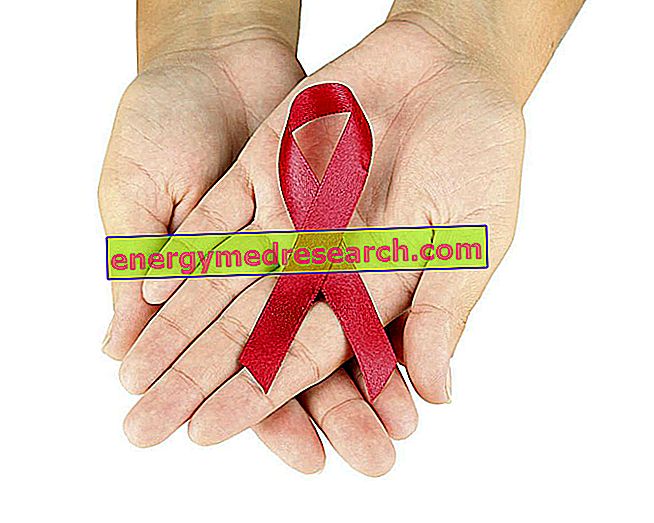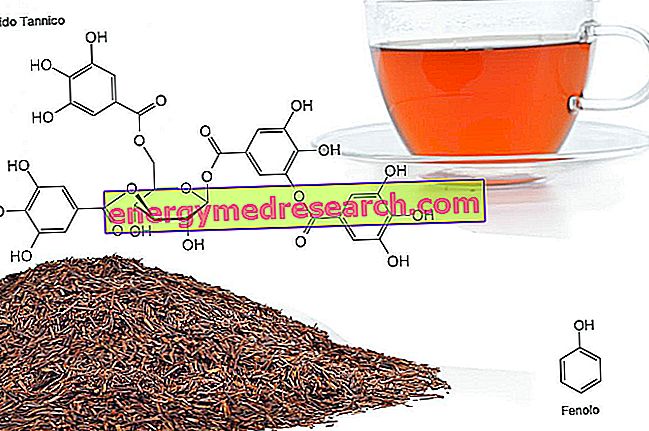Generality
Asherman syndrome is a disease characterized by the formation of adhesions and scar tissue inside the uterus and / or cervix .

These thickenings inside the uterine cavity have variable characteristics, ie they can be thin or thick, localized or confluent.
In most cases, Asherman's syndrome is the result of endometrial trauma, which prevents the normal regeneration of the basal layer and promotes the fusion of damaged areas .
Asherman's syndrome can also result from infections or uterine surgery to remove myomas, fibroids or polyps. Intrauterine adhesions can also be caused by scraping after birth or an abortion .
Symptoms of Asherman syndrome include amenorrhea (ie very poor or absent menstruation) and pelvic pain due to adhesions that block the cervix. However, these events do not apply to all patients: the presentation of the pathology is variable and only a specialist gynecological examination can examine the clinical picture and the possible consequences with certainty.
The treatment of Asherman's syndrome is surgical .
What's this
Asherman syndrome is an intrauterine pathology characterized by the formation of adhesions and scar tissue.
At the level of the uterus, this phenomenon can deform and narrow its lumen, besides being the cause of pelvic pain, menstrual disorders (such as amenorrhea), infertility, placental abnormalities and poliabortivity.
Characteristics of scar tissue
In Asherman's syndrome, endouterine synechiae are created, that is fibrotic adhesions, usually tenacious, between the anterior and posterior walls of the uterus, which take on one another.
In other cases, the scar lesions of Asherman syndrome are formed only in a small portion of the uterus.
Causes and Risk Factors
Premise: what are menstruation?
Menstruation consists of the exfoliation of the mucosa covering the inner wall of the uterus ( endometrium ), accompanied by a variable blood loss through the vagina. This phenomenon is renewed cyclically every month and lasts, on average, from 3 to 7 days.
Menstruation allows the uterus to eliminate the inner lining built during the previous cycle (if conception has not occurred). By renewing the most superficial layers of the endometrium, the uterus maintains, from a biological point of view, the "soil" that will host the possibly fertilized egg. These changes occur from puberty to menopause and are directly related to fertility.
The inner lining of the uterine cavity, called the endometrium, is formed by two layers:
- Functional layer : it is the part adjacent to the uterine cavity. This layer contains the body of the uterine glands, the body of the spiraling arteries with their most tortuous portion, and, more on the surface, the covering epithelium. The functional layer is the part of the endometrium that is renewed during menstruation.
- Basal layer : it is a very thin tissue, directly adherent to the myometrium, necessary to support the overlying functional layer. The basal layer contains the fundus of the uterine glands, the capillarisation of the straight arteries and the trunk of the spiraling arteries. This therefore represents the layer from which, after menstruation, the previously lost functional zone is restored.
Trauma, infection or surgery that occurs in the basal layer of the endometrium can lead to the development of intrauterine scars. The formation of adhesions depends on an abnormal healing process, which causes fusion between the damaged areas and / or partial obstruction of some parts of the uterus. In the most serious cases of Asherman's syndrome, the adhesions determine the complete obliteration of the uterine cavity.
To remember
Asherman syndrome results from damage, in the form of trauma, injury, destruction or resection, of the basal layer of the endometrium.
What can cause Asherman's syndrome?
Asherman's syndrome may be the consequence of:
- Endometritis (inflammation of the endometrium);
- Severe endometrial infections .
This condition can also result from interventions on the uterus, such as:
- Myomectomy : is a procedure indicated for the surgical removal of fibroids;
- Endometrial ablation : it is used in women with excessive uterine bleeding (menorrhagia), as an alternative to hysterectomy; with a special instrument that is introduced into the uterus through the vagina, the mucosa reseca that covers the uterine cavity (endometrium) as a lining.
- Dilation and curettage : surgery that combines dilation of the cervix and curettage; it also takes the name of revision of the uterine cavity.
- Cesarean section ;
- Scraping ;
- Pelvic irradiation ;
- Pregnancy interruptions (spontaneous or induced abortion).
Women with placental abnormalities (eg placenta increta) have a higher risk of developing Asherman's syndrome, as the adhesion of placental tissue involves the deeper layers of the endometrium. Sometimes, the adhesions derive from the fibrotic activity of the products considered of conception; placental retention may occur with or without bleeding, after a birth or following an elective abortion.
Asherman syndrome in developing countries
Despite being a rare disease in Europe and North America, in other countries, such as India, Asherman's syndrome is caused significantly by genital tuberculosis and schistosomiasis .
In particular, genital tuberculosis often involves total obliteration of the uterine cavity, a very difficult pathological condition to treat.
It should be noted that Asherman's syndrome can develop even if the woman has never been subjected to surgery or in the absence of traumas and uterine pregnancies.
Asherman's syndrome after curettage
Curettage is an invasive gynecological procedure, performed for diagnostic or therapeutic purposes for:
- Take a portion of endometrium (for example, to trace the origin of some menstrual disorders or confirm / deny a suspicion of cervical cancer);
- Remove an abnormal mass contained in the uterus (tumors, fibroids or uterine polyps);
- Voluntarily interrupt an unwanted pregnancy (no later than the 13th week of gestation).
During surgery, an instrument called a curette is used, which removes a part of the uterine lining tissue (endometrium); if the maneuver is performed too vigorously and the basal layer of the endometrium is exceeded, adequate regeneration of the same no longer occurs and Asherman's syndrome takes over.
Asherman syndrome: risk factors
Factors that can increase the likelihood of developing Asherman syndrome include:
- Age of the patient;
- Number of pregnancies;
- Overweight / obesity;
- Spontaneous abortions (especially if late with respect to gestational age);
- Congenital defects of the uterus, such as the uterus septum or the bicorne uterus.
Asherman syndrome is an acquired disease, but the genetic predisposition to developing this condition is still under study.
Symptoms and Complications
Asherman syndrome may be associated with various disorders, based on:
- Position of adhesions : inside the uterus, lesions can be localized only in some areas or can be confluent; generally, adhesions are not vascularized, an important element that helps to plan the most appropriate treatment plan.
- Gravity : scarring can be thin or thick; the extent of adhesions determines whether the case is mild, moderate or severe. The severity of the disease can be summarized in three grades:
- Mild Asherman syndrome : few loose adhesions involving less than a third of the uterine cavity, with normal or hypomenorrhea menstruation;
- Moderate Asherman syndrome : combination of loose and compact adhesions in one or two thirds of the uterus, with hypomenorrhea;
- Severe Asherman syndrome : compact and tenacious adhesions involving more than two thirds of the uterine cavity, with amenorrhea.
- Characteristics of the menstrual cycle (duration, frequency, quantity of blood loss, etc.);
- Amount of functional residual endometrium .
Asherman syndrome usually occurs with:
- Reduction or absence of menstrual flow and duration of bleeding: Asherman's syndrome can be associated with amenorrhea (absence of menstruation) or a poor menstrual cycle in terms of duration and quantity of blood loss ( hypomenorrhea ).
- Infertility : the presence of fibrotic adhesions in the uterine cavity can hinder or prevent the normal nesting of the product of conception. This correlates with a reduction in fertility and can make it difficult to start a pregnancy.
Other symptoms that may be associated with Asherman syndrome are:
- Pain during menstruation ( dysmenorrhea );
- Painful ovulation ( mittelschmerz ).
Note
Some women with Asherman's syndrome do not have menstruation, but they experience abdominal pain every month, at a time when the flow should normally appear. This disorder could indicate that menstruation is occurring, but blood loss does not have a chance to get out of the vaginal canal, due to the adhesions that block the cervix.
Menstrual abnormalities are often, but not always, related to the severity of Asherman's syndrome: for example, minor adhesions limited to the cervix or lower uterus can produce secondary amenorrhea in the same way as a sclerotic atrophic endometrium . In other words, the symptoms, when considered individually, do not necessarily reflect the gravity of the situation.
Possible complications
Depending on the severity, Asherman's syndrome can cause infertility, repeated abortions and future obstetric complications . If left untreated, obstruction of menstrual flow resulting from adhesions can lead, in some cases, to endometriosis .
Asherman syndrome and pregnancy
If a pregnancy is undertaken with Asherman's syndrome, the risks depend on the seriousness of the situation, therefore they must be evaluated case by case by the specialist doctor. Usually, mild cases do not cause concern.
Complications occur predominantly when Asherman's syndrome is severe and includes abnormal placentation (eg placenta accreta). Other reported situations are premature birth, uterine rupture and spontaneous termination of pregnancy .
Asherman's syndrome may also be related to cervical incompetence, a condition in which the cervix is no longer able to support the growing weight of the fetus, the pressure causes the placenta to rupture and the mother prematurely goes into labor.
Diagnosis

The procedure that allows the formulation of the diagnosis of Asherman syndrome begins with the anamnesis, to obtain from the patient the greatest number of information about the personal clinical history.
Confirmation is provided by hysteroscopy ( gold standard technique for Asherman syndrome), with direct visualization of the uterus.
This survey is the most reliable for the diagnosis and will reveal exactly the extent of the adhesions and how much they damage the endometrial cavity. Hysteroscopy also allows the visualization of the entrance of the tubes and establishes the real possibilities of treatment, indicating a specific forecast for each case.
In evaluating Asherman's syndrome, hysterosalpingography may also be useful, although this is less informative than hysteroscopy .
Two-dimensional ultrasound is not, on the other hand, a reliable method to diagnose Asherman's syndrome, although it may suggest an adhesive intrauterine disease.
As for blood tests, hormonal dosages show levels consistent with reproductive function.
Note
Asherman syndrome may not be recognized in women who are not trying to conceive, since they may not recognize the symptoms (hypomenorrhea, premenstrual pain, etc.). Furthermore, the pathology can be under-diagnosed, as it is usually not detectable by routine examinations or procedures such as an ultrasound.
Treatment
Treatment of Asherman's syndrome depends on the etiology (eg obstetric trauma, infection, etc.), the extent of the lesions and the presence of other individual factors, such as age or the desire to become pregnant.
In general, adhesions of mild or moderate severity can be successfully managed by hysteroscopy (sometimes laparoscopically assisted) by a very experienced surgeon. Complete obliteration of the uterine cavity, occlusion of the fallopian tubes, involvement of the deep endometrium or myometrial trauma are conditions that may require different surgical interventions and / or hormonal therapies or even not be correctable.
It must be considered, then, that adhesions tend to reform, especially in the most severe cases of Asherman's syndrome.
Removal of adhesions
The endometrial lining can be restored by resection of the adhesions ( adesiolysis ), by hysteroscopy or other types of intervention .
During the surgical treatment of Asherman's syndrome, laparoscopic control of the uterine cavity is provided, as well as extreme attention to gestures, to avoid creating new scars, further aggravating the condition or even causing a perforation of the uterus. The intervention involves the use of micro-scissors to remove the adhesions or the resectoscope (an instrument that, thanks to the use of electric energy, allows both cutting and simultaneously coagulating).
Prevention of recurrences
At the end of the corrective intervention for Asherman's syndrome, to avoid contact between the walls of the uterus in the immediate post-operative recovery phase, various methods can be used, such as the use of barriers and intrauterine devices (eg. Foley catheter, intrauterine balloon, uterine stent, cross-linked hyaluronic acid, etc.). Their placement makes antibiotic prophylaxis necessary to reduce the risk of possible infections.
The pharmacological methods used to promote endometrial proliferation include sequential hormone therapy, with estrogen followed by a progestin and the use of vasodilators . The goal of this treatment is to stimulate the growth of the endometrium and prevent reformation of the adhesions .
Other doctors prefer to avoid relapses by prescribing outpatient hysteroscopies, on a weekly basis, for the early identification of recurrent adhesions (in other words, eliminating any new lesions that are not starting to form).
After surgery, proper recovery from Asherman's syndrome is monitored with regular ultrasound checks .



